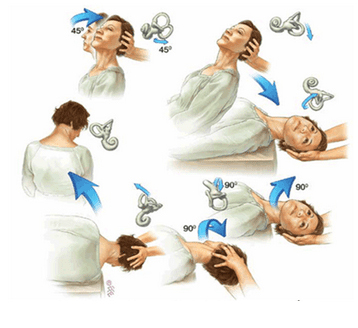Vestibular Rehabilitation Back

Vestibular rehabilitation is a specific kind of physical therapy aimed at addressing issues related to the vestibular system, which governs balance, spatial orientation, and ocular movements. This treatment is often advised for persons experiencing dizziness, vertigo, imbalance, or other symptoms associated with vestibular diseases.
Age-related alterations might affect the vestibular system and impair an individual's everyday functioning. As the population increases, vestibular rehabilitation services must be accessible to those in need.
The phrase dizziness encompasses a range of feelings, including light-headedness, swaying, and confusion. Vertigo is a frequently used phrase that refers to a particular kind of dizziness, characterized by the perception of movement in the surrounding environment.
The vestibular system's function is to facilitate balance, spatial orientation, and stability during motion. The sensory system is situated in the inner ear, particularly inside the vestibular organs: the utricle, saccule, and three semicircular canals. The primary functions and objectives of the vestibular system encompass:
The vestibular system is intricately linked to the ocular motor system, responsible for regulating eye movements. It facilitates the synchronization of ocular movements with cranial motions to preserve stable vision during activities such as ambulation or head rotation.
The vestibular system integrates information with inputs from other sensory systems, including vision and proprioception, to control posture and avert falls.
The vestibular system is responsive to linear acceleration (straight-line movement) and angular acceleration (rotational movement). This sensitivity enables us to detect and react to changes in motion, such as traveling in a vehicle or swiftly rotating our head.
BPPV
The most frequent reason for vertigo resulting from a peripheral vestibular dysfunction is BPPV. It is more prevalent in older adults and affects 20–30% of all patients with a history of vertigo. More precisely, it is a biomechanical issue whereby one or more semicircular canals are activated improperly, causing nystagmus, vertigo, and recurrent nausea. The issue is caused by otoconia that have floated to one or more of the three semicircular canals after dislocating from the utricle.
For more information on VRT, BPPV and related therapy or conditions, contact Alliston Physio Therapy today.